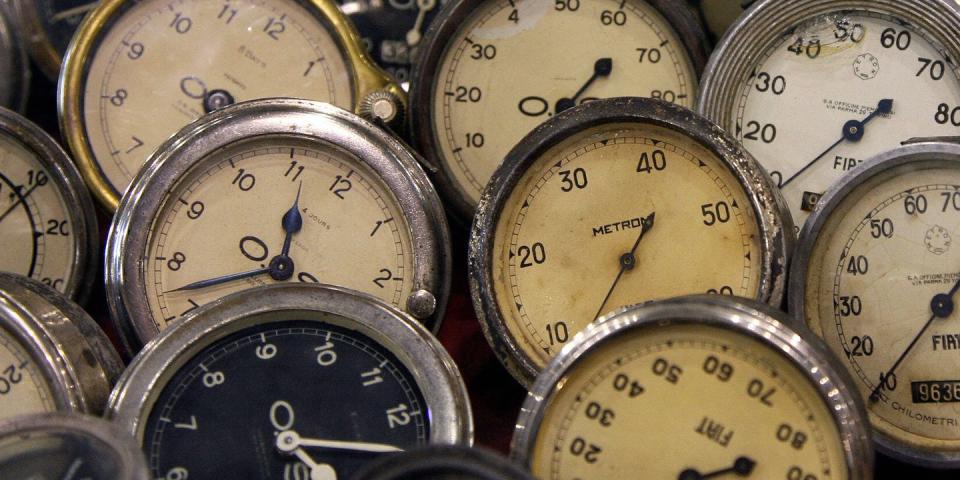Does Anyone Bother to Fix Their Classic Car’s Clock?

Given the crossover between people who like classic cars and those who like other complicated devices in general—and vintage wristwatches specifically—it’s a little surprising that the car clock often goes completely neglected during the automotive recommissioning process.
Our Murilee Martin has amassed a huge assortment of the things, sure, but an informal survey of Autoweek editors reveals that exactly none of us has functioning clocks in our pre-quartz era (it’s totally a thing, like brass era or nickel era, I swear) classic cars. I suspect a lot of you reading this are in the same boat.
Since car clocks occupy a substantial piece of dashboard real estate, and are by design highly visible, this isn’t exactly an “out of sight, out of mind” situation. Instead, it seems that when faced with all of the other challenges of keeping an aging car on the road—and for occasional use, at that—it’s one of those things that remains at the bottom of the to-do list more or less perpetually. A functional clock won’t make your car run any better.
But behind a vintage car clock’s fancy hands and dials, and behind its straightforward timekeeping function, there are some interesting mechanisms at play.
The earliest car clocks were, predictably enough, fully spring-driven; depending on how you look at it, they were either like scaled-up pocket watches or scaled-down mantel clocks. Like any basic spring-driven mechanical clock, you had to wind them periodically—or, since they typically went in high-end cars like Rolls-Royces and Packards, you relied on your chauffeur/mechanic to ensure that they were always appropriately wound.
After World War II, electromechanical clocks—or more accurately, electric remontoire clocks—came to dominate the automotive timekeeping scene. Like their hand-wound predecessors, these clocks still keep time via conventional balance wheel-regulated movements, but their drive spring—the “remontoire,” or secondary source of power—is rewound at regular intervals by a solenoid. This solenoid is powered by the car’s accessory electrical system (or battery, if the car was not running), and it fires every minute or two to do its spring-winding duty.
This might, at first, seem like a needless complication (not that watch enthusiasts have anything against needless complications ...). Why didn’t automakers use a version of the simple, reliable, fully electric clocks such as were commonly found in households starting in the 1930s?
It’s because these timepieces, known as “synchronous clocks,” use the frequency of the power grid (60 Hz, in America’s case) to keep time. This is an elegant setup, but one that requires an alternating current power supply to function; car accessory systems function on direct current. Until quartz came along, the electromechanical mechanism was the most hands-off approach to reliable onboard automotive timekeeping. Other mechanisms did exist, but the electromechanical setup was by far the most common.
To figure out why old car clocks never seem to work, and what it takes to bring them back to life, I called up Jerry Magayne of The Clock Works (one of a number services that will get your defunct automotive timepiece back up and running). Operating out of Wisconsin, The Clock Works started as a sideline operation in the mid-1980s, but became a full business in 1988; Magayne says he’s personally handled 36,000 clocks over the years. When we spoke on a Friday afternoon, he’d just been working on a clock from a ’62 Ford Thunderbird.

 Yahoo Autos
Yahoo Autos 